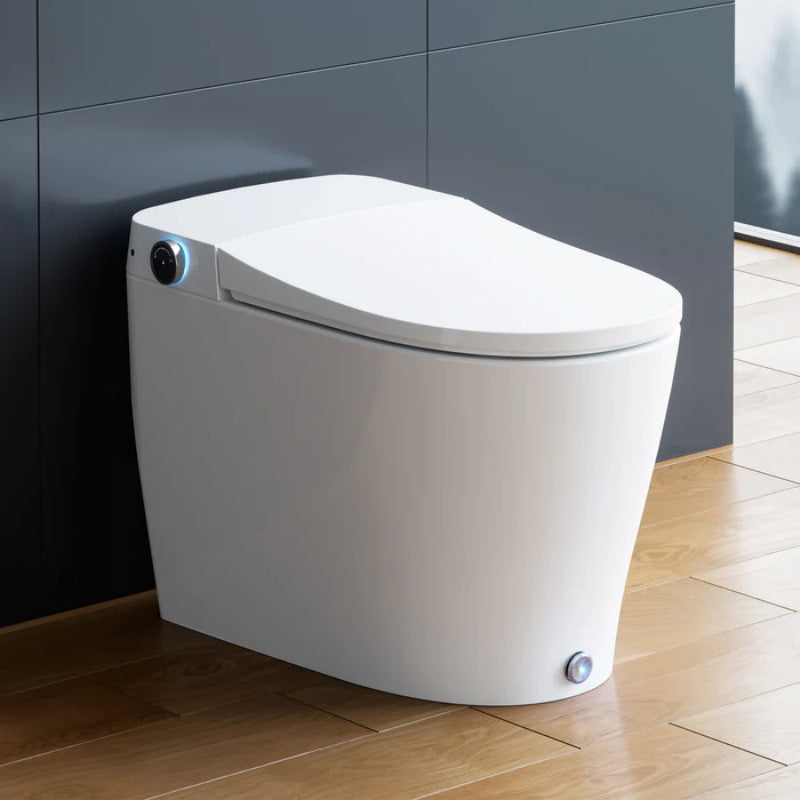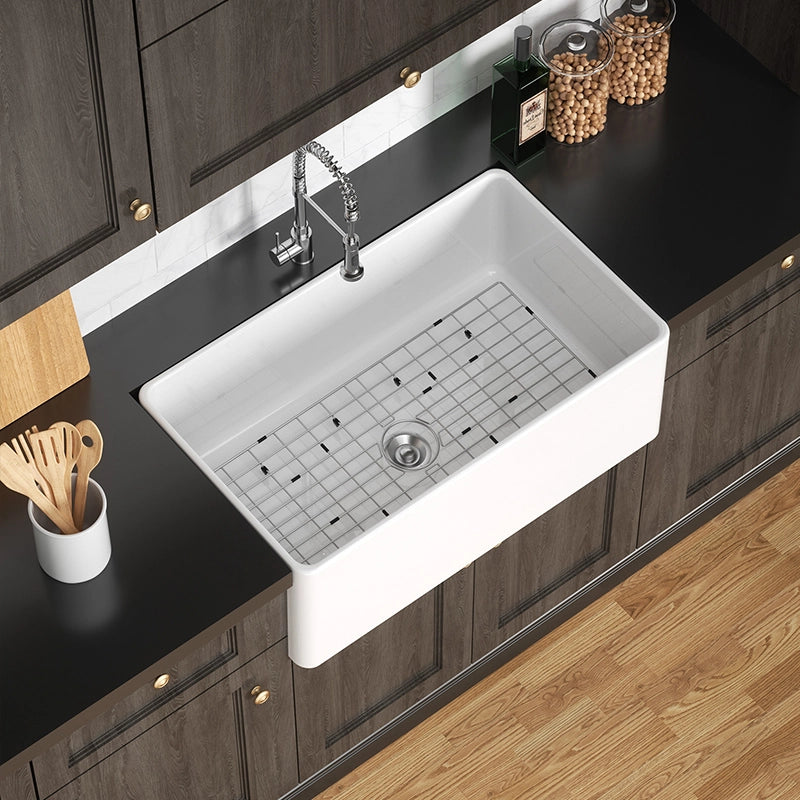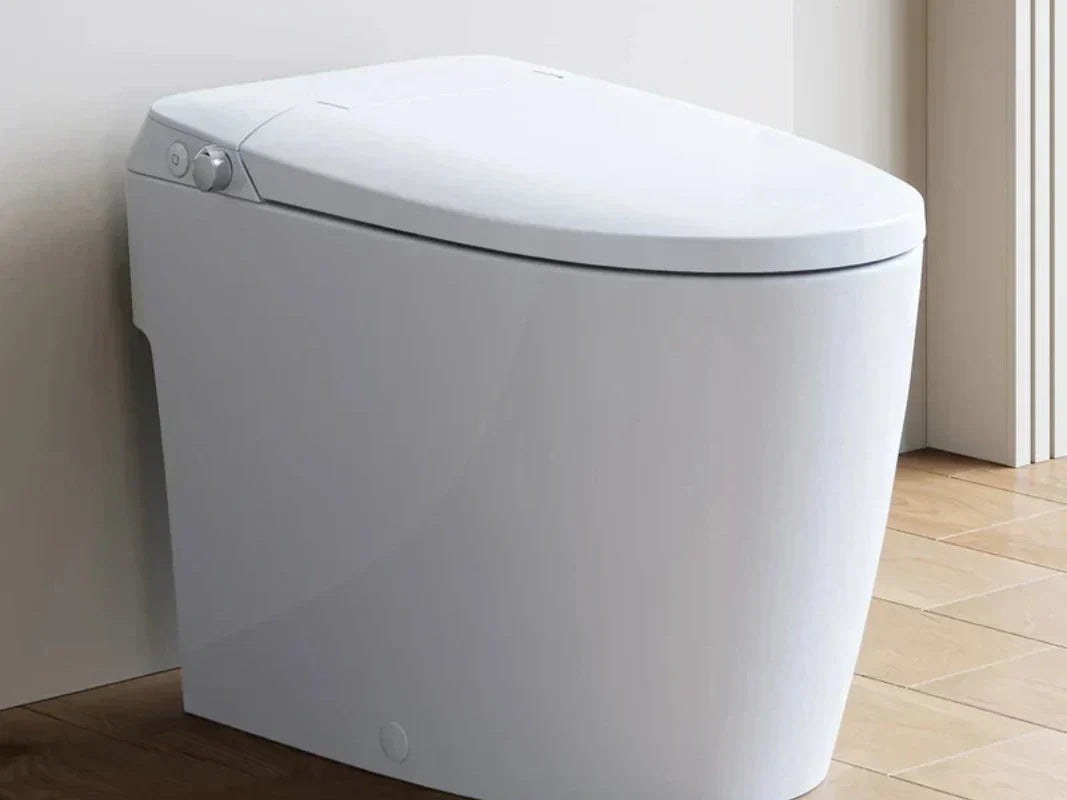When your toilet wobbles, it’s more than a minor annoyance—it’s a warning sign. A rocking toilet often points to loose closet bolts, a failed wax ring, flange problems, or floor/subfloor damage. Left unfixed, it can leak, let in sewer gas, and cause costly water damage and mold. This guide starts with fast diagnosis, then shows proven DIY fixes, when to call a plumber, and how to prevent the wobble from coming back. You’ll get step-by-step repairs, a simple decision matrix, cost and time estimates, case studies, and a checklist. Use the quick diagnostic flowchart first to spot the root cause, then follow the repair path that fits your situation, skill level, and budget.
Toilet Wobbles: Fast Diagnosis and Safety First
Before diving into wobbling toilet repair, it’s crucial to understand what’s actually causing the movement. This section helps you identify early warning signs of toilet wobbles, assess safety risks, and rule out plumbing issues before they turn into costly leaks or floor damage.
60-second checklist: bolts, base movement, water, and odor
Start with a quick pass so you don’t miss the obvious. Ask yourself:
-
Are the exposed T-bolts/closet bolts at the base missing caps, loose, or spinning?
-
Does the toilet base shift side-to-side or front-to-back if you rock it gently?
-
Is there moisture, staining, or discoloration around the toilet base?
-
Do you notice a musty or sewer odor near the toilet?
-
Does the floor feel soft or spongy around the base?
Helpful tools: a flashlight, paper towel, and a small level. If the toilet tank wobbles independently of the bowl, note that too—it can be a separate fix.
Visual diagnostic flowchart (interactive)
Use this flow-style logic to point you to the likely cause:
-
If bolts are loose or spinning → tighten or replace bolts. If tightening does not hold, check the flange slots.
-
If base movement returns soon after tightening → suspect a wax ring that has compressed or a flange that is too low or damaged.
-
If the floor feels soft or uneven → inspect for subfloor moisture or rot; shimming alone may not work.
-
If there’s odor or dampness with rocking → plan for a wax ring replacement and a flange inspection.
-
If the tank wiggles but the bowl is steady → check tank-to-bowl bolts and gasket; do not overtighten porcelain.
You can download a printable PDF version of this flowchart for offline use.
Safety steps before troubleshooting
Take a few minutes to set up a safe work area:
-
Shut off the water supply at the stop valve. Flush the toilet to empty the tank; hold the handle down to drain more water.
-
Sponge out remaining water from the tank and bowl if you plan to remove the toilet.
-
Protect the floor with cardboard or an old towel to avoid scratches and to catch drips.
-
Avoid overtightening bolts. Porcelain can crack if stressed, and a cracked base means you’ll need a new toilet.
Is a wobbly toilet dangerous?
-
It can cause hidden leaks that soak and rot the floor and subfloor.
-
It can let sewer gas seep into the room if the seal is broken (IPC, 2021).
-
It can grow mold and mildew under the toilet due to trapped moisture.
-
It can turn a small repair into a large, costly job if ignored.
In short, treat a loose toilet as urgent. Fix movement before it becomes water damage.

Core Causes of a Rocking Toilet and How to Confirm
Once you’ve confirmed that your toilet wobbles, the next step is finding out why. Here, we break down the most common causes—from loose bolts to a damaged flange—so you can inspect, test, and confirm what’s causing the toilet to rock or leak.
Loose or corroded closet bolts
The most common cause of a wobbly toilet is loose closet bolts—the two bolts that secure the toilet to the toilet flange under the base. You may see missing caps, rust, or a bolt that spins without tightening. Confirm by gently rocking the bowl; if movement lessens when you hand-snug the nuts, bolts were loose. If a bolt won’t tighten at all, the flange slots may be broken or corroded and can’t hold the bolt head.
Pro tip: Tighten in small turns on alternating sides to avoid stressing the porcelain.
Wax ring failure and compression
A wax ring seals the toilet to the drainpipe. Over time, wax can compress or shift. A rocking toilet can crush the ring, allowing water to seep and odors to escape. Signs include dampness, discoloration, musty smell, and a wobble that returns soon after tightening bolts. To confirm, you usually need to remove the toilet and inspect the ring and flange.
If you see darkened or mold-flecked wax, or water stains beneath the toilet, plan to replace the wax ring.
Closet flange issues: broken, low, or high
The closet flange anchors the toilet to the drain and sets height. If the flange is cracked, lower than the finished floor, or too high, you can’t secure the toilet well. You may find bolts that won’t hold or a rock that persists even after a new wax ring. Use a small mirror or your phone camera to check flange height and condition. As a rule, the flange rim should sit about 1/4 inch above the finished floor to compress the seal correctly.
Uneven floor, soft subfloor, or cracked base
If the floor dips near the toilet, tiles have “lippage,” or the area feels spongy, shimming alone may not be enough. Water leaks from an old wax ring can cause the subfloor to deteriorate, which then causes movement. Also look for hairline cracks in the porcelain base, which can grow if the toilet rocks and gets overtightened.
If the floor is the problem, fix the floor first or the wobble will return.
DIY Fixes That Work Now
Not every wobble needs a plumber. If the flange and floor are sound, you can fix a wobbly toilet with careful steps. Work slowly and avoid force.
Tighten/replace closet bolts the right way
If the toilet is loose, start here. If bolts are rusted or spin freely, replace them.
Steps:
-
Remove decorative caps to expose nuts.
-
Stabilize the bowl by holding it at the rim; ensure it’s centered over the drain.
-
Gently tighten the nuts on alternating sides, a quarter-turn at a time. Stop when snug.
-
If bolts just spin or are corroded, shut off water, flush the toilet to empty the tank, disconnect the water supply, and remove the toilet to replace the T-bolts.
-
Install new stainless steel or brass T-bolts into the flange. Add new washers and nuts.
-
Reset the toilet and re-tighten evenly, alternating sides. Do not overtighten.
Materials: stainless or brass closet bolts, washers, nuts, and new caps.
When tightening does not stop the wobble, plan to shim and/or replace the wax ring.
Shim the toilet base without causing stress
Shimming fills gaps between the base and an uneven floor so you can secure the toilet without cracking the porcelain.
Steps:
-
With the toilet set in place and bolts lightly snug, test for gaps by rocking gently.
-
Slide thin plastic or composite shims into the widest gaps. Avoid wood; it swells and can rot.
-
Adjust shims until the toilet sits stable and level. Check with a small level on the bowl rim.
-
Trim protruding shims with a utility knife.
-
Tighten the bolts a bit more on alternating sides. Stop once firm—do not crank down hard.
-
Apply a neat bead of bathroom-grade caulk along the front and sides of the base. Leave a small gap at the back to spot leaks.
Shims are a fine long-term fix if the subfloor is sound. If the floor is soft, repair the subfloor first.

Replace the wax ring and reset the toilet
If you see leaks, odors, or a flattened ring, a wax ring replacement is the right move. Many DIYers can complete this in under two hours.
Steps:
-
Shut off water. Flush the toilet to empty the tank. Hold the handle to drain more water.
-
Disconnect the water supply line at the fill valve under the tank.
-
Remove the bolt caps and nuts. Rock the toilet gently to break the wax seal.
-
Lift the bowl (and tank, if one-piece lift it as a single unit; if two-piece, remove the tank first). Set it on a towel or cardboard.
-
Scrape off old wax from the horn of the toilet and the flange using a putty knife.
-
Inspect the flange for cracks, missing ears, or low height. If damaged, repair or replace the flange or use an extender if it’s too low.
-
Set a new wax ring (or a wax-free seal) centered on the flange or on the toilet horn, per manufacturer instructions.
-
Carefully lower the toilet straight down over the bolts. Aim to land squarely in one shot to avoid smearing the seal.
-
Press down with even body weight to compress the ring. Keep the toilet level.
-
Install washers and nuts. Tighten gently on alternating sides until snug.
-
Shim if needed to stop any tiny rock, then finish tightening to firm—not more.
-
Reconnect the water supply, turn water on, and test flush. Check for leaks around the base.
Standard wax rings seal well but don’t allow re-seating. Wax-free seals are cleaner and can be reset if needed, but make sure the size and height match your flange setup.
Caulking best practices for stability and hygiene
Caulk helps stop side-to-side movement and keeps mop water out from under the toilet. Use an antimicrobial, bathroom-grade caulk. Run a smooth bead along the front and sides of the base. Leave a small gap at the back to reveal any future leak. Wipe the bead with a damp finger or smoothing tool for a clean look.
Caulk does not replace bolts or fix a bad flange, but it completes the job and reduces odors and grime.

Visual/interactive aids
-
A flange height diagram helps you see how tile, vinyl, or laminate changes the needed ring height.
-
Use the matrix below to pick the right fix.
Table: Cause-to-Fix Decision Matrix
| Cause | How to confirm | Primary fix | Difficulty (1–5) | Cost range (USD) | Time |
|---|---|---|---|---|---|
| Loose/ corroded closet bolts | Bolts spin or won’t hold; wobble reduces when hand-snugged | Replace T-bolts; retighten evenly | 2 | 10–35 | 30–60 min |
| Compressed/ failed wax ring | Odor or dampness at base; wobble returns after tightening | Replace wax ring; reset toilet | 3 | 15–40 | 60–120 min |
| Flange too low | Flange rim sits below finished floor; poor bolt grab | Add flange extender(s), longer bolts | 3 | 20–60 | 60–120 min |
| Broken/corroded flange | Cracked ears; bolts won’t hold | Repair ring or full flange replace | 4 | 25–150 (parts) | 2–4 hrs |
| Uneven floor (minor) | Small gaps under base; firm subfloor | Shim and caulk; retighten | 2 | 5–20 | 30–60 min |
| Soft/rotted subfloor | Spongy feel; staining or musty odor | Cut out and patch subfloor | 5 | 100–400 (materials) | Half day+ |
| Cracked toilet base | Hairline cracks; leak persists | Replace toilet | 3 | 150–400+ (fixture) | 2–3 hrs |
Note: Difficulty assumes basic DIY skills; adjust for your comfort level.
Costs, Timelines, and When to Call a Pro
Even though many toilet wobbles can be fixed with simple DIY tools, some plumbing issues go beyond what homeowners can safely handle. This section compares DIY vs. professional costs, repair timelines, and the signs that it’s time to call a licensed plumber.
DIY vs. professional: time, tools, and budget
Table: Common Repairs and Typical Ranges
| Repair | Typical DIY cost (USD) | Typical Pro cost (USD) | Time (DIY) |
| Bolts/shims | 10–35 | 100–250 | 30–60 min |
| Wax ring reset | 15–40 | 150–350 | 60–120 min |
| Flange repair | 25–150 (parts) | 300–600 | 2–4 hrs |
| Subfloor patch | 100–400 (materials) | 500–2,000+ | Half day+ |
Red flags that require a plumber or contractor
-
Persistent leaks after a reset or tightening
-
A broken or corroded flange you cannot access or remove (especially on a slab)
-
Severe floor movement or obvious rot
-
Cast iron drain or stack issues
-
A cracked bowl or tank
If you’re unsure, it’s safer to call a professional plumber. A small mistake, like overtightening and cracking porcelain, can force a full replacement.

Insurance, permits, and code considerations
Slow leaks can affect insurance claims if they are considered neglect. Take photos before and after a repair. Keep receipts. Building codes require toilets to be anchored securely to the floor and sealed to the drain. When you remodel floors, make sure the finished floor flange height remains correct. Check your local code based on the International Plumbing Code or Uniform Plumbing Code adopted in your area.
Real-World Data, Case Studies, and Common Mistakes
Learning from real wobbling toilet repair cases can save you time and money. Below, you’ll find insights from plumbing and heating experts, real inspection data, and common errors homeowners make when trying to fix a toilet that rocks back and forth.
Service-call stats and inspection insights
Many plumbers report that more than half of wobbling toilet calls trace back to loose bolts. Home inspectors often find that 30–40% of toilets need stabilization, usually because movement was ignored, which let the wax ring fail and moisture creep into the subfloor. In other words, the top common cause is simple hardware or seal issues that grew worse over time.
Case study: wobble to subfloor patch
A homeowner noticed a faint musty smell and a slight rock when sitting down. At first, they tried to gently tighten the nuts, which helped for a week. Then the toilet to wobble returned. After removing the toilet, they found a flattened toilet wax ring, dark stains on the subfloor, and a soft, 3-inch area near one bolt. The repair: new T-bolts, a new wax ring, and a small subfloor patch. Total cost was about $350. Had they waited, the rot could have spread under the finished floor, turning a small fix into a major flooring job.
Community insights
DIYers often report that repeated tightening attempts fail because the flange is low or cracked, or the floor is uneven. Many also warn that overtightening bolts can crack the toilet base. A common win is a full reset: new bolts, proper shims, and a fresh ring. That simple mix tends to deliver a steady, stable toilet that stays put.
Mistakes to avoid
Avoid these traps:
-
Cranking down on bolts until the porcelain cracks
-
Using wood shims that swell and rot
-
Sealing the entire base with caulk and hiding future leaks
-
Skipping a flange height check after a new floor is installed
-
Resetting on a soft or rotten subfloor
Fix the cause, not just the movement you feel.

Prevention, Maintenance, and Upgrade Options
Once your toilet wobbles are fixed, prevention is key. These maintenance tips and upgrade ideas will help keep your toilet stable, protect the subfloor from moisture, and ensure your installation stays firm and leak-free for years.
Annual inspection checklist
Once a year, do a quick pass:
-
Check bolt caps and give the bowl a gentle rock—any movement?
-
Look at the caulk line. Are there gaps? Is the front bead intact?
-
Check for discoloration around the base or on the ceiling below the bathroom (if any).
-
If you own a moisture meter, take a quick reading around the base.
Early signs are easier and cheaper to fix.
Moisture control and early leak detection
Run a bead of silicone caulk along the front and sides to block mop water. Leave a gap at the back for leak detection. For added peace of mind, you can place a small leak alarm behind the toilet. If you remodel, protect the flange and keep debris out of the drain.
Choosing stable, easy-to-install toilets
If you plan to install a new toilet, look for a wide base with a firm mounting footprint. Many modern models come with closet bolts and stability kits that make it easier to secure the toilet to the floor. If you want easier sit-down height, consider ADA or “comfort height” bowls. Always check that the toilet to the floor flange connection is firm and level during install.
Long-term strategies
Any time you change flooring height, confirm the flange ends up 1/4 inch above the new surface. Document your install with a few photos: flange condition, ring type, bolt kit, and final caulk line. Future you—or a future owner—will thank you.
FAQs
1. How to fix a wobbly toilet?
When your toilet wobbles or rocks back and forth, start by checking the closet bolts that hold the toilet to the floor. Loose bolts are a common cause of a wobbling toilet and may lead to leaks or a rotting floor if left unaddressed. Use a wrench to tighten the bolts evenly, but avoid overtightening. If the toilet is still unstable, inspect the toilet flange—it may be damaged or corroded, causing the toilet to rock. You may need to reinstall the toilet with a new wax ring or flange repair kit if your toilet wobbles even after tightening. Following the right steps to fix this issue ensures the toilet is installed correctly, prevents leaking toilet problems, and avoids costly repairs later.
2. How much to fix a wobbly toilet?
The cost to fix a wobbling toilet varies depending on the cause. If the issue is just loose bolts, the wobbling toilet repair may cost under $30 with basic tools like a wrench. However, if the flange is damaged or corrosion is present, you may spend $50–$150 for parts and supplies. When a rotting floor or leaking toilet is discovered, professional assistance from a plumbing and heating specialist may raise costs to $300–$600 or more. Address the issue early to prevent larger plumbing issues that may require full toilet reinstall or replacement. Ignoring signs of damage can lead to instability and costly structural repairs.
3. Why is my toilet wobbly suddenly?
A toilet may become unstable suddenly due to several factors—loose mounting bolts, a compressed wax ring, or a damaged toilet flange that no longer holds the toilet firmly. Moisture from a leaking toilet can also weaken the subfloor, causing the toilet wobbles or rocks back and forth over time. Sometimes, plumbing issues or corrosion where the flange connects the toilet can lead to instability. Inspect the toilet flange for cracks or rust, and tighten all bolts evenly with a wrench. If the flange is damaged or the floor feels soft, it may need to be repaired or replaced. Addressing the issue promptly prevents further leaks and ensures your toilet is installed correctly.
4. Are toilet tanks supposed to wiggle?
A slight movement in the tank is normal because the rubber gasket cushions where it connects the toilet bowl. However, if the tank noticeably rocks or leaks, it signals potential plumbing issues or loose bolts. Use a wrench to gently tighten the tank bolts on alternating sides. If the toilet is still unstable, inspect for corrosion or damaged gaskets that need to be repaired. A tank that moves excessively can cause a toilet to leak or become misaligned. Always ensure it’s installed correctly and avoid overtightening, which can crack the porcelain. If you can’t stop the movement, seek professional assistance from a plumbing and heating expert.
5. How tight should you tighten a toilet tank?
When tightening a toilet tank, go slowly—tighten each nut a bit at a time using a wrench on alternating sides until the tank just stops moving. Over-tightening can cause a toilet to crack, while under-tightening may lead to leaks and wobbling. The goal is to hold the toilet tank firmly without stressing the porcelain. If the toilet wobbles or water seeps near the bolts, inspect the toilet flange and gasket that connects the toilet to the bowl; they may need to be repaired or replaced. Ensuring it’s installed correctly helps prevent future leaks, costly repairs, and plumbing issues that often result when your toilet wobbles again.
References








Leave a comment
This site is protected by hCaptcha and the hCaptcha Privacy Policy and Terms of Service apply.